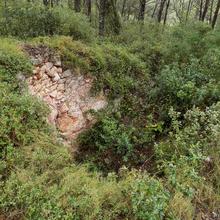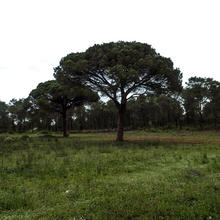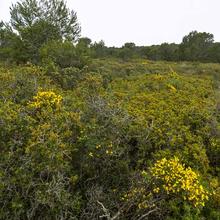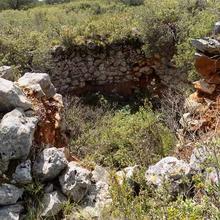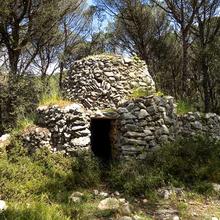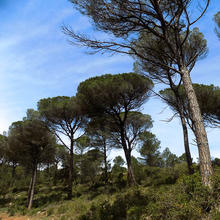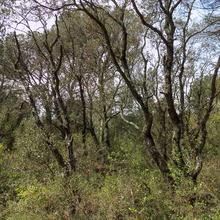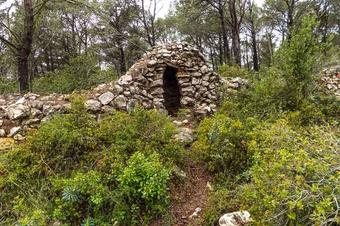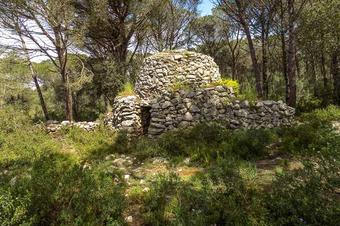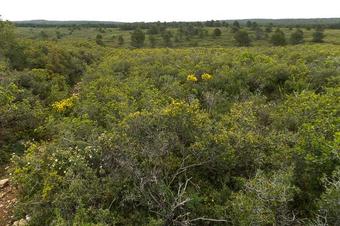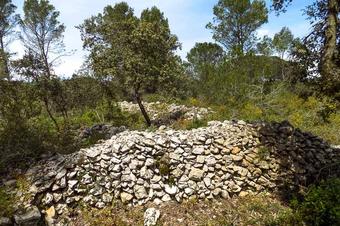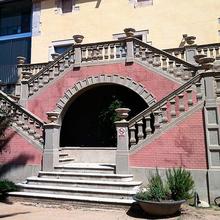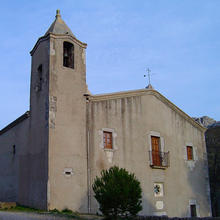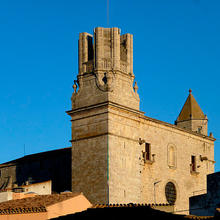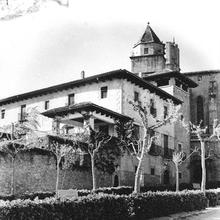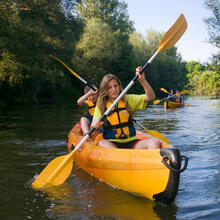Introduction
Aixarts, dry stone and garrigue in the Montgrí
This route explores the old agricultural network of the interior of the Montgrí Massif. Between pine groves and garrigue, it passes old aixarts, which in the local speech, are the low stone walls piled up as a result of breaking-up and removing stones from wooded land to make it suitable for planting crops. In other parts of Catalonia, these are known as clapers. By extension, in this area of the Empordà, an aixart is all of the farm land enclosed by this type of wall. You can also see a sinkhole, cisterns, dry-stone huts, a well and old lime furnaces.
We recommend the Local Natura App to do this route. Download it for free here:
Apple store Google Play


-
TypologyAnti-clockwise circular
-
DifficultyEasy
-
Duration2 hours
-
Slope50.00 meters
-
Distance6.50 km
-
ThemeFlora and faunaArchitecture and environment
-
ActivityBy foot
-
Rating
Slope graph

Description
Aixarts, dry stone and garrigue in the Montgrí
The Windy Route itinerary, so-called because this space is strongly affected by the tramuntana wind when it blows strongly, takes you on a tour of the eastern part of the great inland dune, formed years ago precisely as a result of this wind full of sand particles from the gulf of Roses. In the late-nineteenth and early-twentieth centuries, the pine plantations stopped the advance of the dunes, which had buried the start of the south face of this low section of the Montgrí Massif in the place called the Coll de les Sorres – sand pass – for that reason which is more or less where this itinerary starts.
Following a first stretch on the Camí del Coll de les Sorres, you pass a first lime furnace and pass through the Aixart d’en Busqueta, where you can see a fine pair of stone pines standing alone and two dry-stone huts.
Between garrigue and remains of aixarts, the low walls of piled up stones resulting from breaking-up wooded ground and removing the stones to make it suitable for planting, you come to the Coma Llobera gully, one of the most important seasonal streams in this area of the Montgrí, which is however almost always dry. It is because of this aridity, that the old inhabitants and peasants of this area, had to use their ingenuity to save water and have it available. This is why the sinkhole and the cisterns you will see a little further on were so important.
The route turns to head back, returning along the Camí dels Aixarts, with its evocative name and passing by the beautiful Barraca dels Hereus and the remains of another lime furnace. Straight away, you pass through the fields of les Ànimes and of el Porrer, with many remains of aixarts and of some huts, and, in the middle of an open pine forest and before a small grove of holm oaks, you will see the well of Mustinyà, when there is not far left to be back at the Coll de les Sorres.
Tips
ROUTE
- This is a circular route in a figure of eight. It is fairly short and very flat and does not present too many problems. Also, if you want to, you can shorten the route considerably at the point where it crosses over itself by turning left instead of going straight on, but you will miss many of the elements of the excursion.
- The route combines stretches on wide cart tracks and trails and paths, almost all of which are very easy. There are only a few specific points which are a bit rougher and rockier, but they do not present any great challenge.
WATER
- There is no drinking water anywhere on the route. Take well filled bottles!
PRECAUTIONS
- Take care with the holes of the lime furnaces, the well, the sinkhole and the cisterns, especially if you are with children. They are not protected!
WEATHER
- Owing to the type of low vegetation that predominates in the area – garrigue – the route offers virtually no shade. It is also advisable to avoid the midsummer heat. In summer, it is best to go in the early morning or in the evening.
- It is important to be very careful or leave the route if it is windy or the tramuntana is forecast to become stronger. It is a very strong wind and in the most exposed parts you will undoubtedly feel its full force. As well as being very unpleasant, it is dangerous as it can make you lose your balance.
- It is best to wear clothing that protects you for the places exposed to the wind, even if it seems like it is not blowing too strongly.
- Consider wearing sun cream, all through the year. You are exposed to the sun in all of the route.
TERRAIN
- It does not present any kind of difficulty.
EQUIPMENT
- A hat and sunglasses are recommended in the summer.
- Binoculars are always worth taking if you like watching nature in detail.
- If you like to photograph popular architecture and the typical flora of the brushwood, take a camera.



